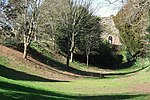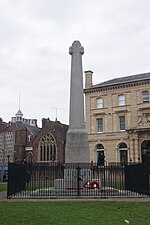Royal Albert Memorial Museum

Royal Albert Memorial Museum & Art Gallery (RAMM) is a museum and art gallery in Exeter, Devon, the largest in the city. It holds significant and diverse collections in areas such as zoology, anthropology, fine art, local and overseas archaeology, and geology. Altogether the museum holds over one million objects, of which a small percentage is on permanent public display. It is a National Portfolio Organisation under the Arts Council England administered programme of strategic investment, which means RAMM receives funding (2012–15) to develop its services. Founded in 1868, the museum is housed in a Gothic Revival building of local New Red Sandstone that has undergone several extensions during its history; most recently, the museum was re-opened on 15 December 2011 after a redevelopment lasting four years and costing £24M. Since its re-opening the museum has received numerous awards.
Excerpt from the Wikipedia article Royal Albert Memorial Museum (License: CC BY-SA 3.0, Authors, Images).Royal Albert Memorial Museum
Queen Street, Exeter St Thomas
Geographical coordinates (GPS) Address External links Nearby Places Show on map
Geographical coordinates (GPS)
| Latitude | Longitude |
|---|---|
| N 50.725111111111 ° | E -3.5323055555556 ° |
Address
Royal Albert Memorial Museum
Queen Street
EX4 3RX Exeter, St Thomas
England, United Kingdom
Open on Google Maps











